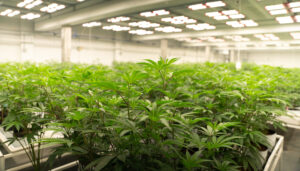
November 7, 2025
More light doesn’t automatically mean that you’ll get higher yields. There’s a limit to how much light your plants can use before it starts doing more harm than good.
Light Intensity Has a Limit
Cannabis can take a lot of light, but only up to a certain point. Once photosynthesis maxes out, extra light can stress or damage the plant. That slows growth and can lead to smaller yields.
Think of it like nutrients. Your plants need enough to stay healthy, but too much causes problems. The same goes for light. You want the right balance where your plants are using light efficiently without getting overloaded.

The Dangers of Photobleaching and Light Burn
Too much light can result in light burn or photobleaching.
Light burn causes yellow or brown spots on the upper leaves closest to the fixture. This usually happens from high intensity or too much heat.
Photobleaching is when the tops of buds or leaves turn pale or white. That means the pigments that help capture light are breaking down. When that happens, photosynthesis in those areas stops completely.
Both of these problems reduce yield and quality because the plant is losing energy and growth potential.

Spectrum Matters Too
Great results don’t come from only having high intensity lights.. The spectrum has to be right too!
Too much red light can make plants stretch or flower too early. Not enough blue light can make them weak or leggy. High intensity combined with an unbalanced spectrum, especially one heavy on red, increases the chance of photobleaching.
A balanced full spectrum helps your plants handle intensity and grow more efficiently.

Uniformity is Just as Important
Even if your average light level looks good, uneven coverage can hurt your grow. Hotspots can burn the canopy while shaded areas lag behind.
Uniform lighting helps reduce stress and keeps growth consistent from top to bottom. That’s why JumpLights designs fixtures to deliver even coverage and a balanced spectrum, not just maximum output.
Building a Smart Lighting Strategy
A few tips for keeping your lighting on track:
- Match your spectrum to each growth stage. Use more blue during veg and more red during flower (but to avoid photobleaching, don’t use too much!).
- Focus on even coverage instead of chasing the highest readings.
- Check your plants daily for signs of light stress and adjust height or dimming when needed.




